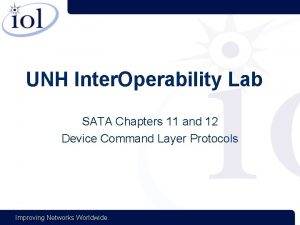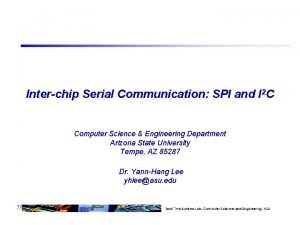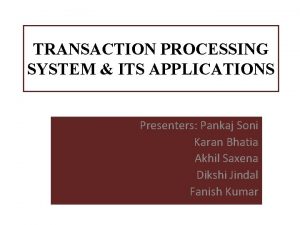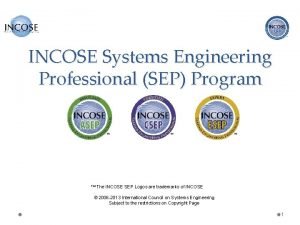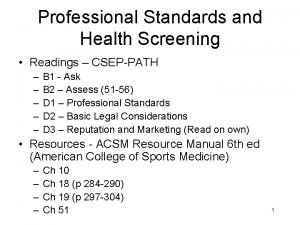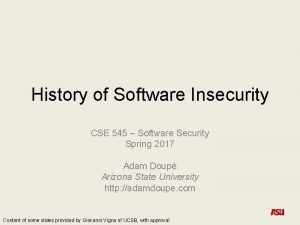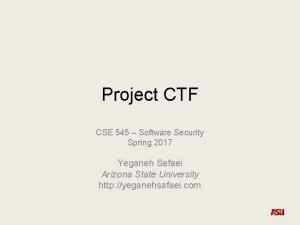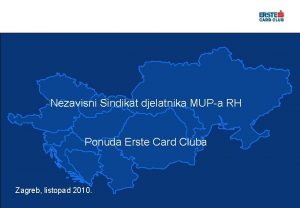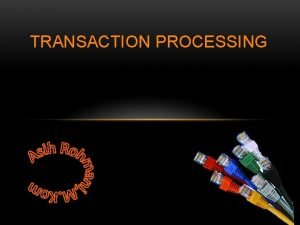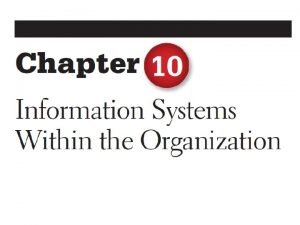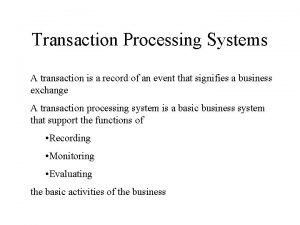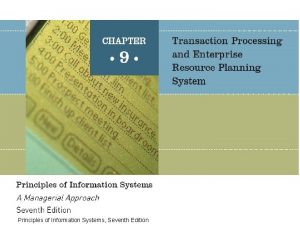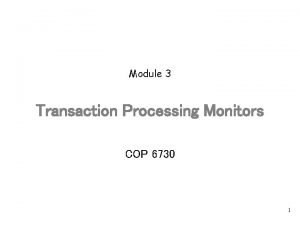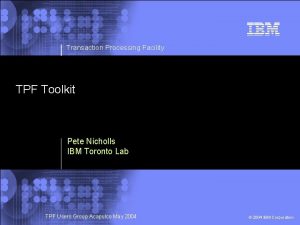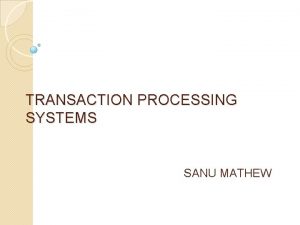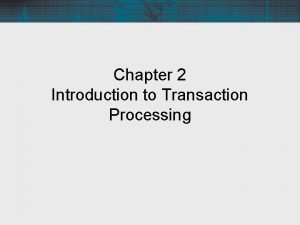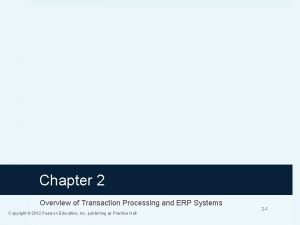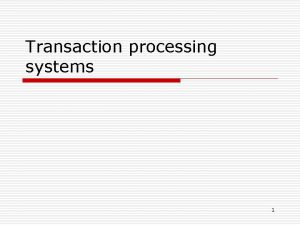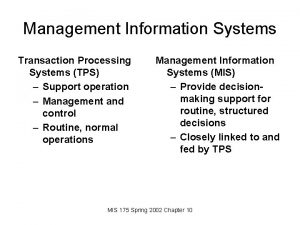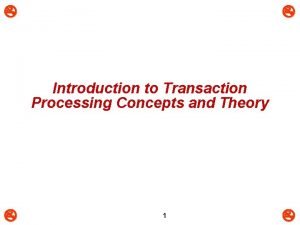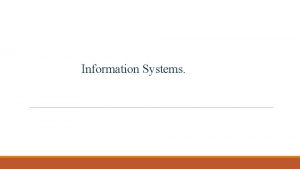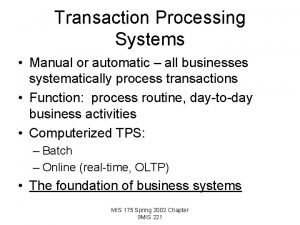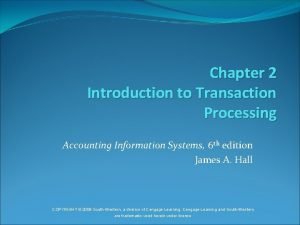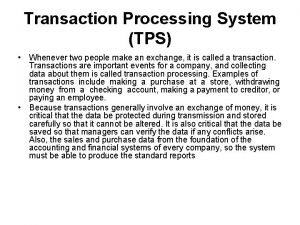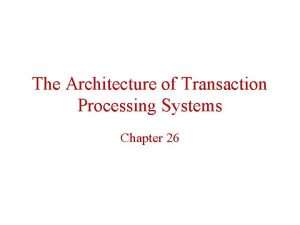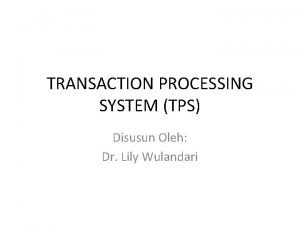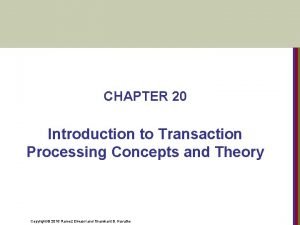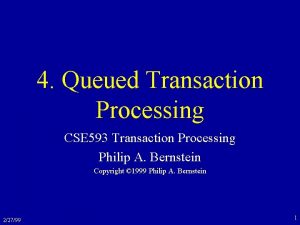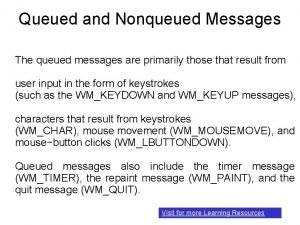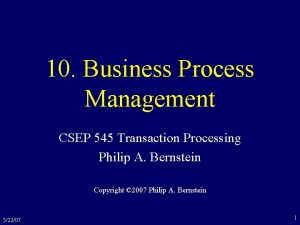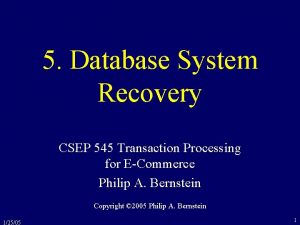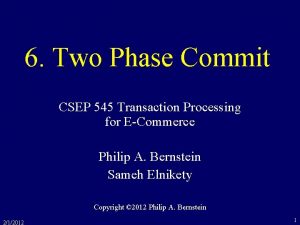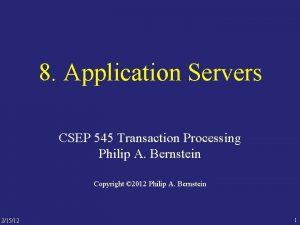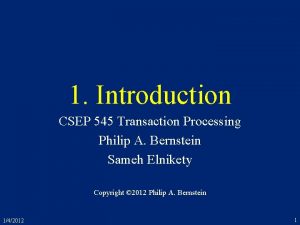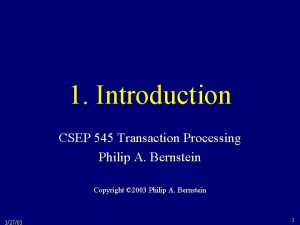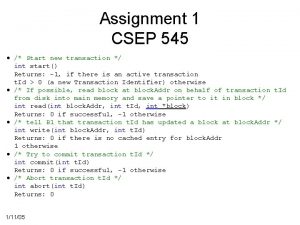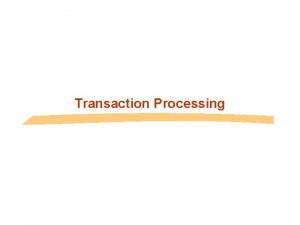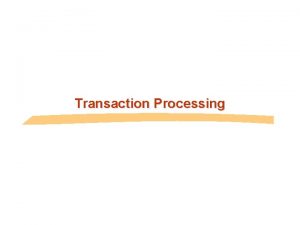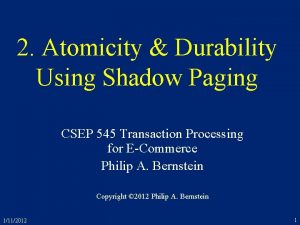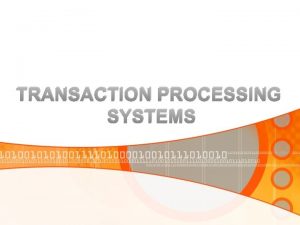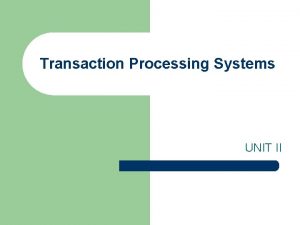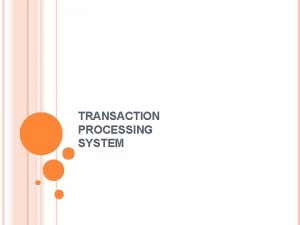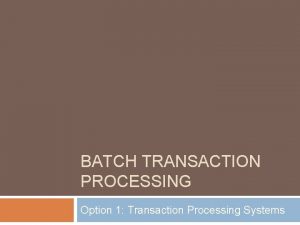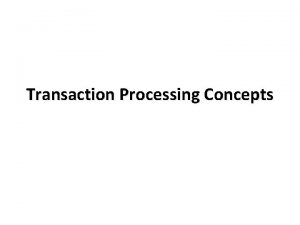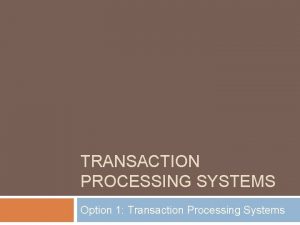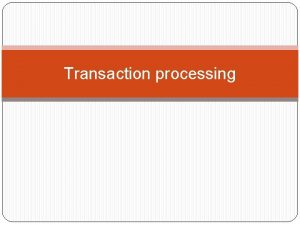9 Queued Transaction Processing CSEP 545 Transaction Processing





































- Slides: 37

9. Queued Transaction Processing CSEP 545 Transaction Processing Philip A. Bernstein Copyright © 2005 Philip A. Bernstein 2/22/05 1

Outline 1. Introduction 2. Transactional Semantics 3. Queue Manager Appendices A. Marshaling B. Multi-transaction Requests (workflow) C. (Appendix) Microsoft Message Queue 2/22/05 2

9. 1 Introduction • Direct TP - a client sends a request to a server, waits (synchronously) for the server to run the transaction and possibly return a reply (e. g. , RPC) • Problems with Direct TP – Server or client-server communications is down when the client wants to send the request – Client or client-server communications is down when the server wants to send the reply – If the server fails, how does the client find out what happened to its outstanding requests? – Load balancing across many servers 2/22/05– Priority-based scheduling of busy servers 3

Persistent Queuing • Queuing - controlling work requests by moving them through persistent transactional queues Client Enqueue Dequeue Server • Benefits of queuing – client can send a request to an unavailable server – server can send a reply to an unavailable client – since the queue is persistent, a client can (in principle) find out the state of a request – can dequeue requests based on priority – can have many servers feed off a single queue 2/22/05 4

Other Benefits • Queue manager as a protocol gateway – need to support multiple protocols in just one system environment – can be a trusted client of other systems to bridge security barriers • Explicit traffic control, without message loss • Safe place to do message translation between application formats 2/22/05 5

9. 2 Transaction Semantics Server View • The queue is a transactional resource manager • Server dequeues request within a transaction • If the transaction aborts, the dequeue is undone, so the request is returned to the queue Server’s request queue E Q 1 Client nqueu e De qu eu Q 2 e Client’s reply queue 2/22/05 Server Program Start Dequeue(Req, Q 1) process request Req Enqueue(Reply, Q 2) Commit 6

Transaction Semantics Server View (cont’d) • Server program is usually a workflow controller • It functions as a dispatcher to – get a request, – call the appropriate transaction server, and – return the reply to the client. • Abort-count limit and error queue to deal with requests that repeatedly lead to an aborted transaction 2/22/05 7

Transaction Semantics - Client View • Client runs one transaction to enqueue a request and a second transaction to dequeue the reply Txn 1: Start Q 1 get input construct request Enqueue(Request, Q 1) Commit Txn 3: Start Q 2 Dequeue(Reply, Q 2) decode reply process output Commit 2/22/05 Txn 2: Start Dequeue(Req, Q 1) process request Req Enqueue(Reply, Q 2 Commit 8

Transaction Semantics Client View (cont’d) • Client transactions are very light weight • Still, every request now requires 3 transactions, two on the client and one on the server – Moreover, if the queue manager is an independent resource manager (rather than being part of the database system), then Transaction 2 requires two phase commit • So queuing’s benefits come at a cost 2/22/05 9

Client Recovery • If a client times out waiting for a reply, it can determine the state of the request from the queues – request is in Q 1, reply is in Q 2, or request is executing • Assume each request has a globally unique ID • If client fails and then recovers, a request could be in one of 4 states: – A. Txn 1 didn’t commit – no message in either queue. – B. Txn 1 committed but server’s Txn 2 did not – request is either in request queue or being processed – C. Txn 2 committed but Txn 3 did not – reply is in the reply queue – D. Txn 3 committed – no message in either queue 2/22/05 10

Client Recovery (2) • So, if the client knows the request id R, it can determine state C and maybe state B. • What if no queued message has the id R? Could be in state A, B, or D. • Can further clarify matters if the client has a local database that can run 2 -phase commit with the queue manager – Use the local database to store the state of the request 2/22/05 11

Transaction Semantics - Client View Txn 0: Start construct request & store it in local DB State(R) = “Not. Submitted” Commit Q 1 Txn 1: Start Get Request R from local DB Enqueue(Request R, Q 1) State(R) = “Submitted” Commit Q 2 Txn 3: Start Dequeue(Reply for R, Q 2) decode reply & process output State(R) = “Done” Commit 2/22/05 Not in the textbook Txn 2: Start Dequeue(Req, Q 1) process request Req Enqueue(Reply, Q 2 Commit 12

Client Recovery (3) Not in the textbook • If client fails and then recovers, a request R could be in one of 4 states: – A. Txn 1 didn’t commit – Local DB says R is Not. Submitted. – B. Txn 1 committed but server’s Txn 2 did not – Local DB says R is Submitted and R is either in request queue or being processed – C. Txn 2 committed but Txn 3 did not – Local DB says R is Submitted and R’s reply is in the reply queue – D. Txn 3 committed – Local DB says R is Done • To distinguish B and C, client first checks request queue (if desired) and then polls reply queue. 2/22/05 13

Persistent Sessions • Suppose client doesn’t have a local database that runs 2 PC with the queue manager. • The queue manager can help by persistently remembering each client’s last operation, which is returned when the client connects to a queue … amounts to a persistent session 2/22/05 14

Client Recovery with Persistent Sessions • Now client can figure out • A – if last enqueued request is not R • D – if last dequeued reply is R • B – no evidence of R and not in states A, C, or D. // Let R be id of client’s last request // Assume client ran Txn 0 for R before Txn 1 Client connects to request and reply queues; If (id of last request enqueued R) { resubmit reque elseif (id of last reply message dequeued R) { dequeue (and wait for) reply with id R } else // R was fully processed, nothing to recover 2/22/05 15

Non-Undoable Operations • How to handle non-undoable non-idempotent operations in txn 3 ? Txn 3: Start Dequeue(Reply for R, Q 2) decode reply & process output Crash! State(R) = “Done” => R was processed. Commit But Txn 3 aborts. So R is back on Q 2. • If the operation is undoable, then undo it. • If it’s idempotent, it’s safe to repeat it. • If it’s neither, it had better be testable. 2/22/05 16

Testable Operations • Testable operations – After the operation runs, there is a test operation that the client can execute to tell whether the operation ran – Typically, the non-undoable operation returns a description of the state of the device (before-state) and then changes the state of the device – the test operation returns a description of the state of the device. – E. g. , State description can be a unique ticket/check/form number under the print head 2/22/05 17

Recovery Procedure for State C Log 2/22/05 To process a reply 1. Start a transaction 2. Dequeue the reply 3. If there’s an earlier logged device state reply and it differs from the current devic then ask the operator whether to abort t 4. Persistently log the current device state the reply’s ID. This operation is permane whether or not this transaction commits. 5. Perform the operation on the physical d 6. Commit 18

Optimizations • In effect, the previous procedure makes the action “process output” idempotent. • If “process output” sent a message, it may not be testable, so make sure it’s idempotent! – if txn 3 is sending a receipt, label it by the serial number of the request, so it can be sent twice • Log device state as part of Dequeue operation (saves an I/O) – i. e. , run step 3 before step 2 2/22/05 19

9. 3 Queue Manager • A queue supports most file-oriented operations – create and destroy queue database – create and destroy queue – show and modify queue’s attributes (e. g. security) – open-scan and get-next-element – enqueue and dequeue • next element or element identified by index • inside or outside a transaction – read element 2/22/05 20

Queue Manager (cont’d) • Also has some communication types of operations – start and stop queue – volatile queues (lost in a system failure) – persistent sessions (explained earlier) • System management operations – monitor load – report on failures and recoveries 2/22/05 21

Example of Enqueue Parameters (IBM MQSeries) • • • System-generated and application-assigned message Ids Name of destination queue and reply queue (optional) Flag indicating if message is persistent Message type - datagram, request, reply, report Message priority Correlation id to link reply to request Expiry time Application-defined format type and code page (for I 18 N) Report options - confirm on arrival (when enqueued)? , on delivery (when dequeued)? , on expiry? , on exception? 2/22/05 22

Priority Ordering • Prioritize queue elements • Dequeue by priority • Abort makes strict priority-ordered dequeue too expensive – could never have two elements of different priorities dequeued and uncommitted concurrently • But some systems require it for legal reasons – stock trades must be processed in timestamp order 2/22/05 23

Routing • Forwarding of messages between queues – transactional, to avoid lost messages – batch forwarding of messages, for better throughput – can be implemented as an ordinary transaction server • Often, a lightweight client implementation supports a client queue, – captures messages when client is disconnected, and – forwards them when communication to queue server is re -established • Implies system mgmt requirement to display topology of forwarding links 2/22/05 24

State of the Art • All app servers support some form of queuing • A new trend is to add queuing to the SQL DBMS – Oracle has it. Avoids 2 PC for Txn 2, allows queries, …. • Queuing is hard to build well. It’s a product or major sub-system, not just a feature. • Lots of queuing products with small market share. • Some major ones are – IBM’s MQSeries – BEA Systems Message. Q – Microsoft Message Queuing 2/22/05 25

Appendix A: Marshaling • Caller of Enqueue and Dequeue needs to marshal and unmarshal data into variables • Instead, use the automatic marshaling of RPC • Here’s how RPC works: Client’s System Server’s System Proxy App Runtime Stub App Call receive pack unpack P call P send packet arguments work wait return to caller 2/22/05 unpack results Return receive packet send pack results return 26

Adapting RPC Marshaling for Queues • In effect, use queuing as a transport for RPC • Example – Queued Component in MSMQ server Server’s System Client’s System request Proxy App Runtime queue Runtime Stub App pack unpack P call P dequeue enqueue argurequest ments work wait client reply queue pack dequeue return unpack return enqueue results reply to app results reply 2/22/05 27

Appendix B: Multi-Transaction Requests • Some requests cannot execute as one transaction because – It executes too long (causing lock contention) or – Resources don’t support a compatible 2 -phase commit protocol. • Transaction may run too long because – It requires display I/O with user – People or machines are unavailable (hotel reservation system, manager who approves the request) – It requires long-running real-world actions (get 2 estimates before settling an insurance claim) • Transaction may be required to run independent ACID transactions in subsystems (placing an order, scheduling a shipment, reporting commission) 2/22/05 28

Workflow • A multi-transaction request is called a workflow • Integrated workflow products are now being offered. – IBM MQSeries Workflow, MS Biz. Talk Orchestration, TIBCO, Jet. Form, BEA Web. Logic Process Integrator, Action, . . . – See also www. workflowsoftware. com, www. wfmc. org • They have special features, such as – flowgraph language for describing processes consisting of steps, with preconditions for moving between steps – representation of organizational structure and roles (manual step can be performed by a person in a role, with complex role resolution procedure) – tracing of steps, locating in-flight workflows – ad hoc workflow, integrated with e-mail (case mgmt) 2/22/05 29

Managing Workflow with Queues • Each workflow step is a request • Send the request to the queue of the server that can process the request • Server outputs request(s) for the next step(s) of the workflow Submit expense claim Validate claim Get Manager Approval Email notification Request Automatic Deposit Authorize Payment 2/22/05 30

Workflows Can Violate Atomicity and Isolation • Since a workflow runs as many transactions, – it may not be serializable relative to other workflows – it may not be all-or-nothing • Consider a money transfer run as 2 txns, T 1 & T 2 – – 2/22/05 Conflicting money transfers could run between T 1 & T 2 A failure after T 1 might prevent T 2 from running These problems require application-specific logic E. g. T 2 must send ack to T 1’s node. If T 1’s node times out waiting for the ack, it takes action, possibly compensating for T 1 31

Automated Compensation • In a workflow specification, for each step, identify a compensation. Specification is called a saga. • If a workflow stops making progress, run compensations for all committed steps, in reverse order (like transaction abort). • Need to ensure that each compensation’s input is available (e. g. log it) and that it definitely can run (enforce constraints until workflow completes). • Concept is still at the research stage. 2/22/05 32

Pseudo-conversations • Simple solution in early TP system products • A conversational transaction interacts with its user during its execution • This is a sequential workflow between user & server. • Since this is long-running, it should run as multiple requests • Since there are exactly two participants, just pass the request back and forth – request carries all workflow context – request is recoverable, e. g. send/receive is logged or request is stored in shared disk area • This simple mechanism has been superceded by queues and general-purpose workflow systems. 2/22/05 33

Maintaining Workflow State • Queue elements and pseudo-conversation requests are places for persistent workflow state. Other examples: – Browser cookies (files that are read/written by http requests), containing user profile information – Shopping cart (in web server cache or database) • Such state management arises within a transaction too – Server scans a file. Each time it hits a relevant record, return it. – Issue: later calls must go to the same server, since only it knows where the transaction’s last call left off. – Sol’n 1: keep state in the message (like pseudo-conversation) – Sol’n 2: first call gets a binding handle to the server, so later calls go to it. Server needs to release state when client disappears 2/22/05 34

Appendix C : Microsoft Message Queuing (MSMQ) • Clients enqueue/dequeue to queue servers – API - Open/Close, Send/Receive – Each queue is named in the Active Directory – Additional functions: Create/Delete queue, Locate queue, Set/Get queue properties, Set/Get queue security • Send/Receive can be – Transactional on persistent queues (transparently gets transaction context), using DTC – Non-transactional on persistent/volatile queues • Independent client has a local persistent queue store. – Processes ops locally, asynchronously sends to a server – Dependent client issues RPC to a queue server (easier to administer, fewer resources required) 2/22/05 35

MSMQ Servers • • • Stores messages Dynamic min-cost routing Volatile or persistent (txnal) store and forward Support local / dependent clients and forwarding from servers / independent clients Provides MSMQ Explorer Application 1 MSMQ Server API Open 2/22/05 Security via ACLs, journals, public key authentication Send Rec’v Close Client Proxy Server Information Server Queue Manager Routing Server – Topologies, routing, mgmt • Application 2 ‘A’ ‘B’ ‘C’ Sys 36

MSMQ Interoperation • Exchange Connector - Send and receive messages and forms through Exchange Server and MSMQ • MAPI transport - Send and receive messages and forms through MAPI and MSMQ • Via Level 8 Systems, – Clients - MVS, AS/400, VMS, HP-Unix, Sun-Solaris, AIX, OS/2 clients – Interoperates with IBM MQSeries 2/22/05 37
 Failed command: write fpdma queued
Failed command: write fpdma queued Queued spi
Queued spi Dikshijindal
Dikshijindal Asep incose
Asep incose Incose certification
Incose certification Csep path
Csep path Cse 545 asu github
Cse 545 asu github Cse 545
Cse 545 Bibi mempunyai persediaan tepung terigu sebanyak 11 kg
Bibi mempunyai persediaan tepung terigu sebanyak 11 kg 545 lecrim
545 lecrim Cse 545
Cse 545 Nezavisni sindikat mup
Nezavisni sindikat mup Upenn mse data science
Upenn mse data science Nia 570 negocio en marcha
Nia 570 negocio en marcha Cara kerja transaction processing system
Cara kerja transaction processing system Transaction processing system flow chart
Transaction processing system flow chart Information arrangement
Information arrangement A transaction is any business event that generates
A transaction is any business event that generates Transaction processing system
Transaction processing system Transaction processing system
Transaction processing system Transaction processing monitors
Transaction processing monitors Tpf editor
Tpf editor Payroll transaction processing system
Payroll transaction processing system Flowchart transaction processing system
Flowchart transaction processing system Tps and mis
Tps and mis Transaction processing cycle
Transaction processing cycle Characteristics of tps
Characteristics of tps Transaction processing system
Transaction processing system Tps in ict
Tps in ict Introduction to transaction processing concepts and theory
Introduction to transaction processing concepts and theory Transaction processing system in mis
Transaction processing system in mis Manual transaction processing system
Manual transaction processing system Flowchart transaction processing system
Flowchart transaction processing system Types of transaction processing system
Types of transaction processing system Transaction processing system architecture
Transaction processing system architecture Transaction processing systems adalah
Transaction processing systems adalah Types of tps system
Types of tps system Introduction to transaction processing concepts and theory
Introduction to transaction processing concepts and theory
